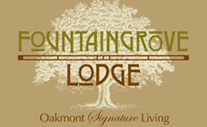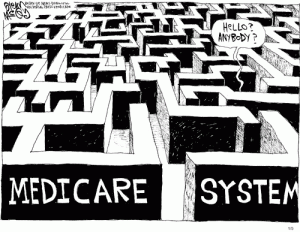That’s what I would want for my mom
By Susan Saldibar
Gene Guarino, President of Residential Assisted Living (RAL) Academy, told me recently that he had come to a realization after attending a national event for large operators in the senior housing space. When he shared it with me, it made a lot of sense. He said, “In each session I attended it seems that the large senior living communities are striving to be more like a home, more personal. Maybe they’re just trying to become what we already are.” (RAL Academy is a Senior Housing Forum partner.)
Is that what’s happening?
So, wouldn’t it be ironic if, in the next 10 years, we went “back home” and ended up with a senior living model minus the soaring ceilings and state of the art buildouts and incorporating all of the intimacy we love about being at home instead? This residential home would be sitting right in the middle of a neighborhood, next to a house with 5 kids, across the street from a young couple, down the street from the library? Would we be going backwards or forwards?
What can larger senior living communities and operators learn from the residential assisted living model? Maybe more than you think.
Without question, the residential assisted living model has grown in popularity. “With over 30,000 RAL homes across the country now, their appeal can not be ignored,” Gene says. “There are many people who would rather move into someone’s RAL home in an established neighborhood than live in a larger community with special rooms for each activity and a dining room that seats 100+ people all on a 10-acre campus.”
Gene sees what he’s doing as part of the overall senior housing solution. He refers to residential assisted living as a “boutique” senior living option, the goal of which is to offer an alternative model to what most seniors experience in CCRCs and traditional assisted living. And, the feedback has been positive. He says, “Many of the people that I’ve spoken with who own or operate larger facilities and look closely at the RAL model, say, ‘That’s what I would want for my mom.’”
Gene also believes that there are things that larger facilities and providers and even smaller independents can learn from what he’s doing. Such as methods to infuse some of the benefits of smaller residential senior living homes into larger communities. And how to create that atmosphere of intimacy that comes with smaller, residential assisted living. Some of the key elements are:
-
Fewer and more familiar faces when it comes to caregivers.
-
Providing an actual “home” environment by creating a cluster of smaller homes.
-
Locating the home within a residential neighborhood so they are a part of the community.
-
Providing closer proximity and access to community services, stores, and parks.
Be in the Know
The Residential Assisted Living National Association is open to everyone who wants to learn more.
“I believe that the RAL model is really the model of the future,” Gene says. “And I think operators, large and small, want to know more about it to see if there is something in the model they can use.” The RAL National Association (www.RALNA.org) provides 3 primary benefits:
-
Group buying (GPO). Members get access to a GPO that allows RAL Academy to get discounts from 200+ companies with products and services that are used daily by RAL homes.
-
National Marketing. An interactive map on the RAL Academy website showing some of the homes they have helped create. The map gives members’ homes national exposure.
-
Lobbying. They have attorneys who work with them, helping to write the rules on building and safety codes, who also work with the FGI (Federal Guideline Institute). They are helping owners and operators understand, navigate, and adhere to regulations (https://www.fgiguidelines.org).
The Residential Assisted Living National Convention has scheduled keynote speakers that include Dr. Bill Thomas, founder of Eden Alternatives and The Green House Project, and Harry S. Dent Jr., best selling author, economist, and expert on demographic trends and predicting some future effects. They will also feature panels to discuss funding resources, dementia care, zoning issues, and the Fair Housing Act, to name a few.
The RAL National Convention has scheduled over 20 educational presentations and is expecting over 500 attendees from around the country. Attendance is open to anyone in the senior housing industry or those who are interested in learning more about the opportunities in it. Owners, operators, and investors are all welcome to attend.
For more information about the RAL National convention go here, coming up October 4th-5th, in Phoenix, Arizona. For more information about the RAL National Association, you can visit their website here.
To learn more about the RAL Academy, you can visit their website.
Download a PDF copy of this article by clicking the button below:












Great article!